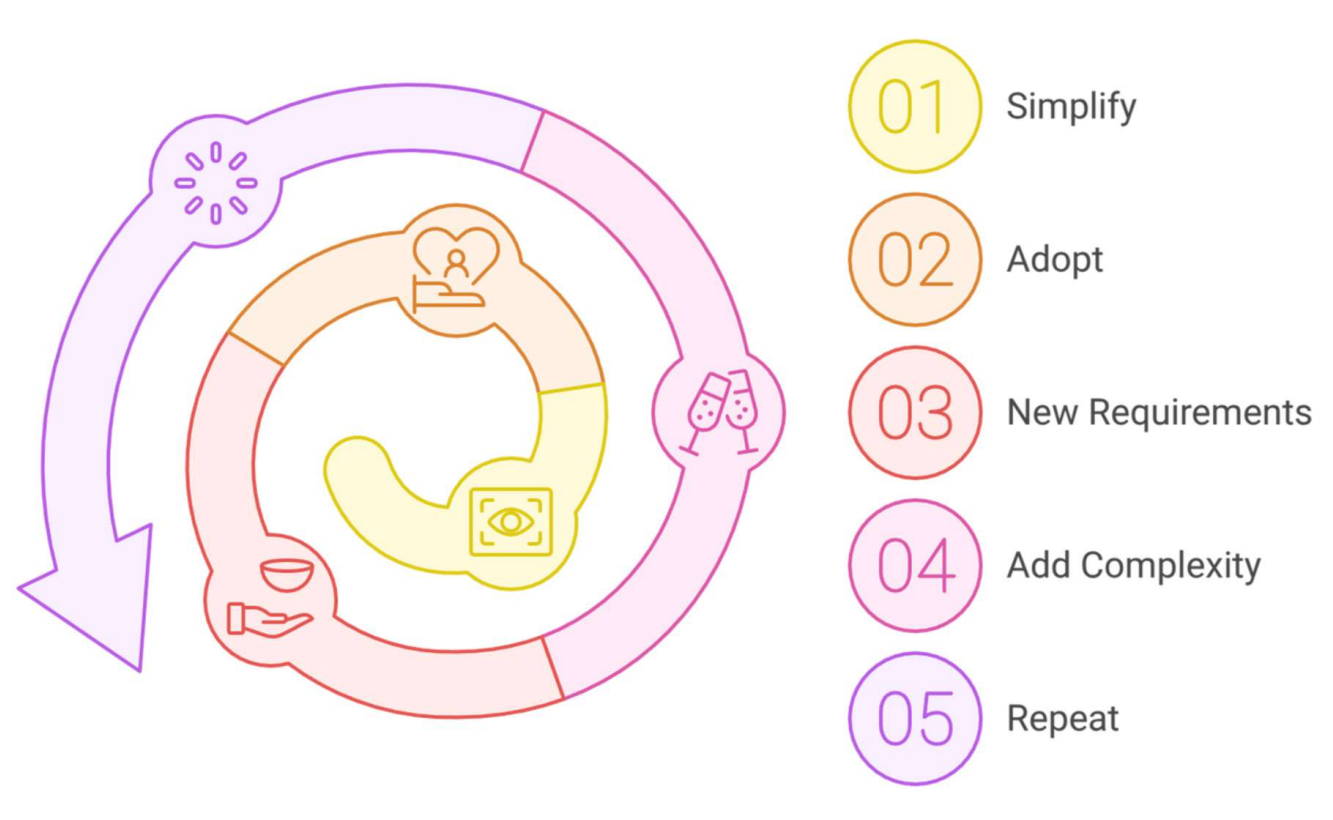Platform abstractions: Asset or liability
Fair warning: Food analogies incoming
Baseline
What do abstractions achive
- Structure through simplification
- Complexity made simple
- Hiden Details, visible value
Dilemma
- Platform team creates abstraction
- Abstraction works for 10 Teams
- Other team requests extension
- Question: How do we deal with this
Possible Solutions
- Add Config Options: Increases complexity of abstraction
- Make One-off exceptions: Breaks standardization, introduces inconsistency
- Require conformity: Hinders innovation, creates enemies
- Allow bypassing: Creates shadow it, risking security and resource control
=> Debt trap: The cost of maintaining a stable platform rises and rises
The debt cycle
The abstraction cycle
- Simplify
- Adobt
- New Requirements
- Add complexity
- Repeat
Warning signs
- Rizing customization requests
- Workarounds
- Shadow IT
Impact
- Each new feature becomes harder to implement
- Teams lose trust in the platform capabilities
- Platform evolutions slows down
- New tech is difficult to incorporate
Abstraction elacity
The abstraction should stretch a bit to accommodate change without brakuing
- Adaptability: Ease of handling new requirements
- Transparency: Understand what your user wants and why
- Extension PAtterns: Document ways to customize the platform behavior
- Migration Paths: Ease of moving away from the platform abstraction
Elasticity
- Can teams access lower level controls (when needed) while staying with the abstraction
- Do users understand what happens underneath (when needed)
- Are ther documented extension/customization points?
Patterns to break the debt trap
- Layered abstraction patterns: start with low-level abstractions that get abstracted on higher levels to allow users to choose the right abstraction level for themselves without having to configure everything themselfes
- Expert-ap: Additional api parameters that are not needed but can be set
- Policy based guard rails: Change the guardrails based on the environment (e.g. deep access in dev, not in prod)
The end goal
- Increase adoption
- Eliminate shadow IT
- Improved satisfaction
- Reduced overhead
